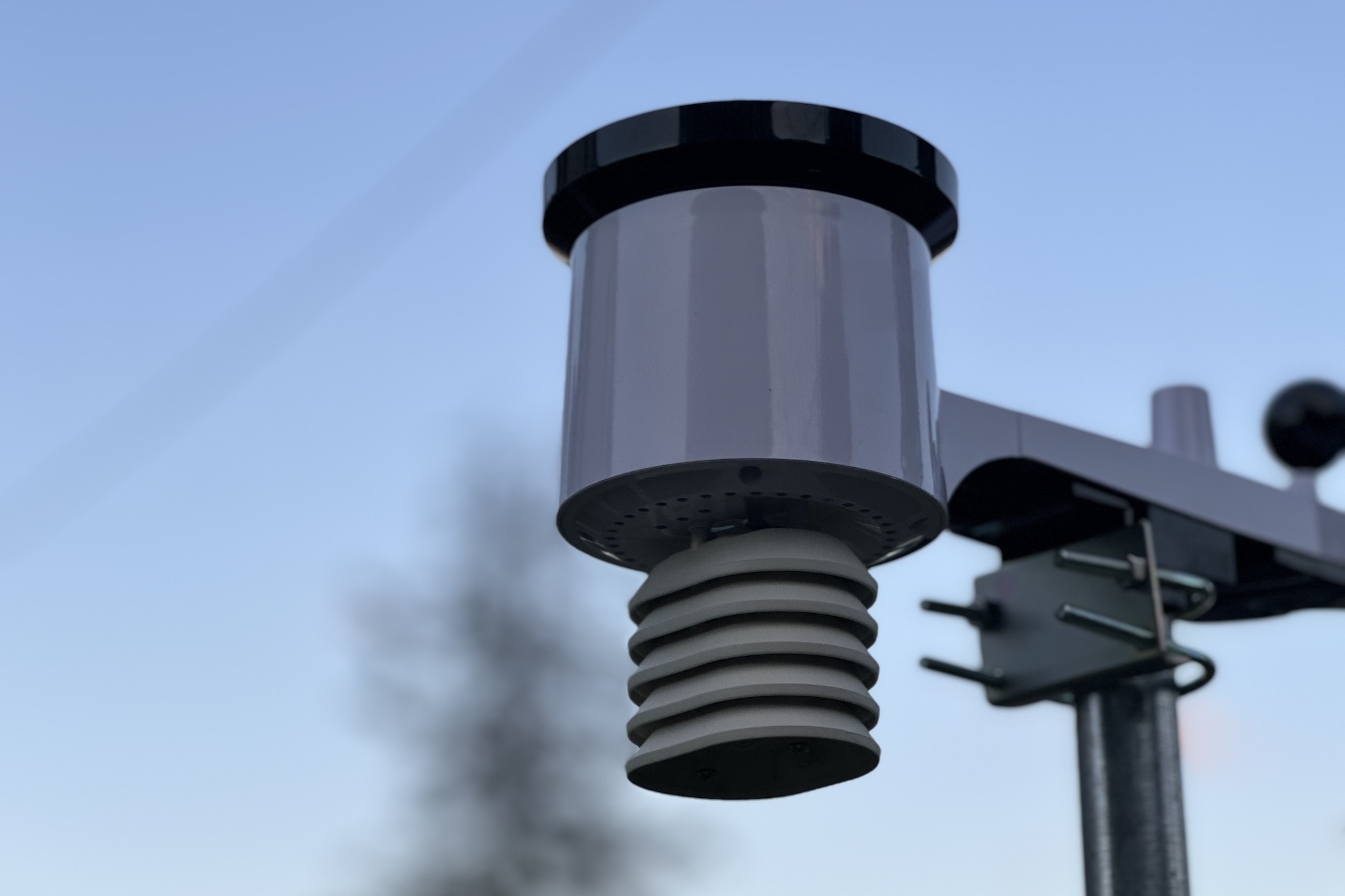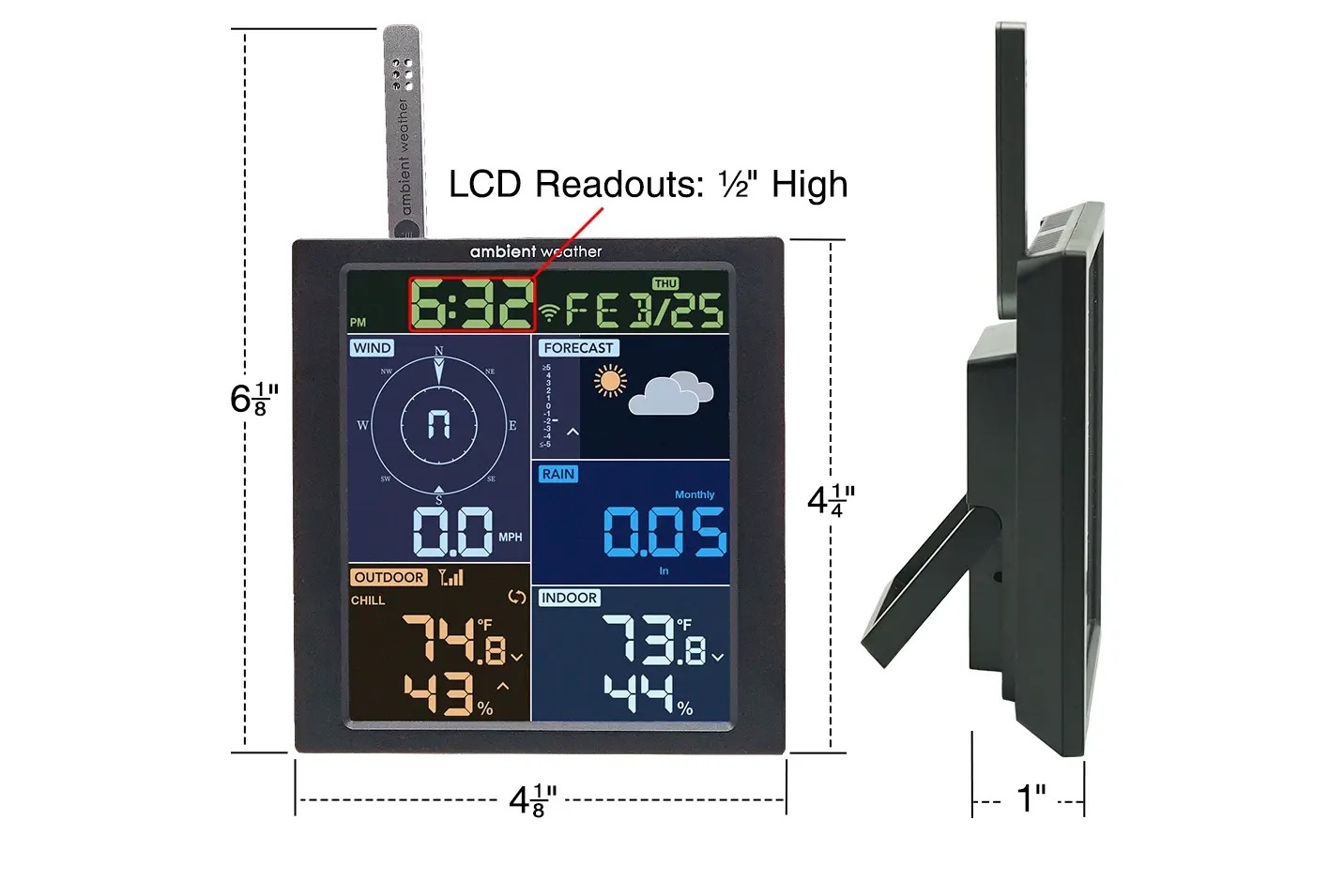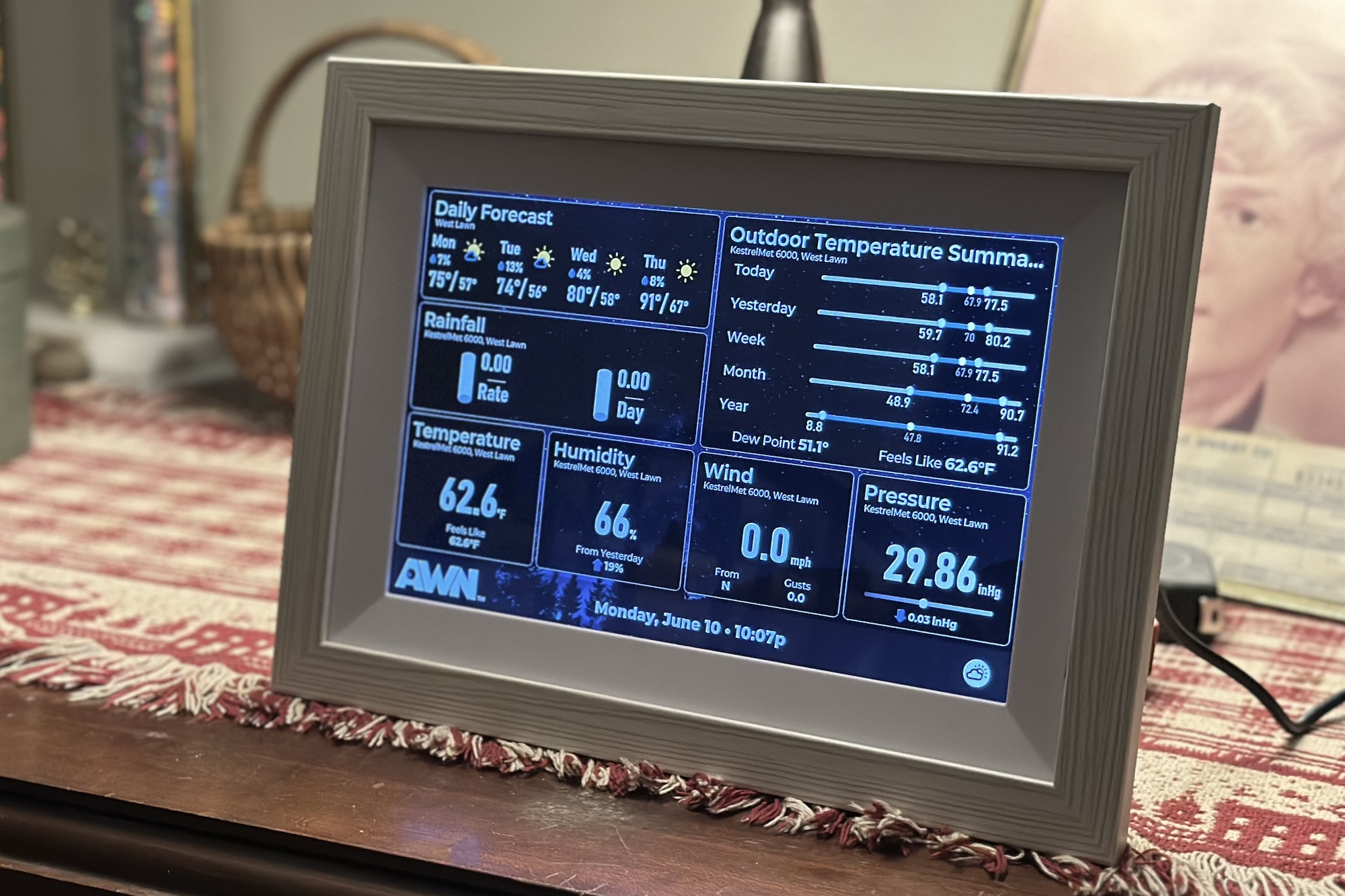Expert’s Rating
Pros
- Small but bright console
- Reasonable accuracy for the price
- Affordably priced
Cons
- Wi-Fi setup is a bit convoluted
- Inferior build quality compared to other Ambient Weather models
Our Verdict
You’ll need to accept some compromises for the price, but the WS-1965 is a very good weather station.
Price When Reviewed
$136.99
Best Prices Today: Ambient Weather WS-1965
$136.99
Ambient Weather’s homer weather stations have always been accurate. The company was the first to embrace smart home technology at a fraction of the price of most weather stations, too.
Enter the Ambient Weather WS-1965, the company’s new base model, which replaces the only weather station in its lineup that doesn’t offer internet connectivity, the Ambient Weather WS-1900.
I’d still recommend the WS-1965 over any other station in its price range.
This is one area where budget weather stations from such brands as Sainlogic, AcuRite, and others have had Ambient Weather beat. They aren’t the most accurate weather stations you’ll find, but some are available at Amazon for for around $100 and some of them include internet and smart home connectivity.

The Weather Station WS-1965 has a conventional anemometer and wind vane.
Ed Oswald/Foundry
But Ambient Weather had to make some compromises get the WS-1965’s price down: It comes with a different sensor suite from the WS-2902, as well as a more basic console; nor does it have the UV and light sensors you’ll find on the more upscale WS-2902 and WS-5000.
For the entry-level weather watchers this product is targeting, I don’t think those features will be missed. The bigger question is does the WS-1965 measure up to the quality standards I’ve come to expect from Ambient Weather?
Feature set and installation
The Ambient Weather WS-1965 comes with a sensor suite, mounting hardware, and a small screwdriver to attach the wind gauge and anemometer. The console display is one of the smallest I’ve seen on a home weather station, measuring about 4 x 4 x 1 inches (HxWxD), but it’s bright and readable from a distance.
There’s also a power cable and plug for the console, along with a user manual. You’ll need to provide four AA batteries: two for the console as backup power to prevent data loss, and two for the sensor suite.
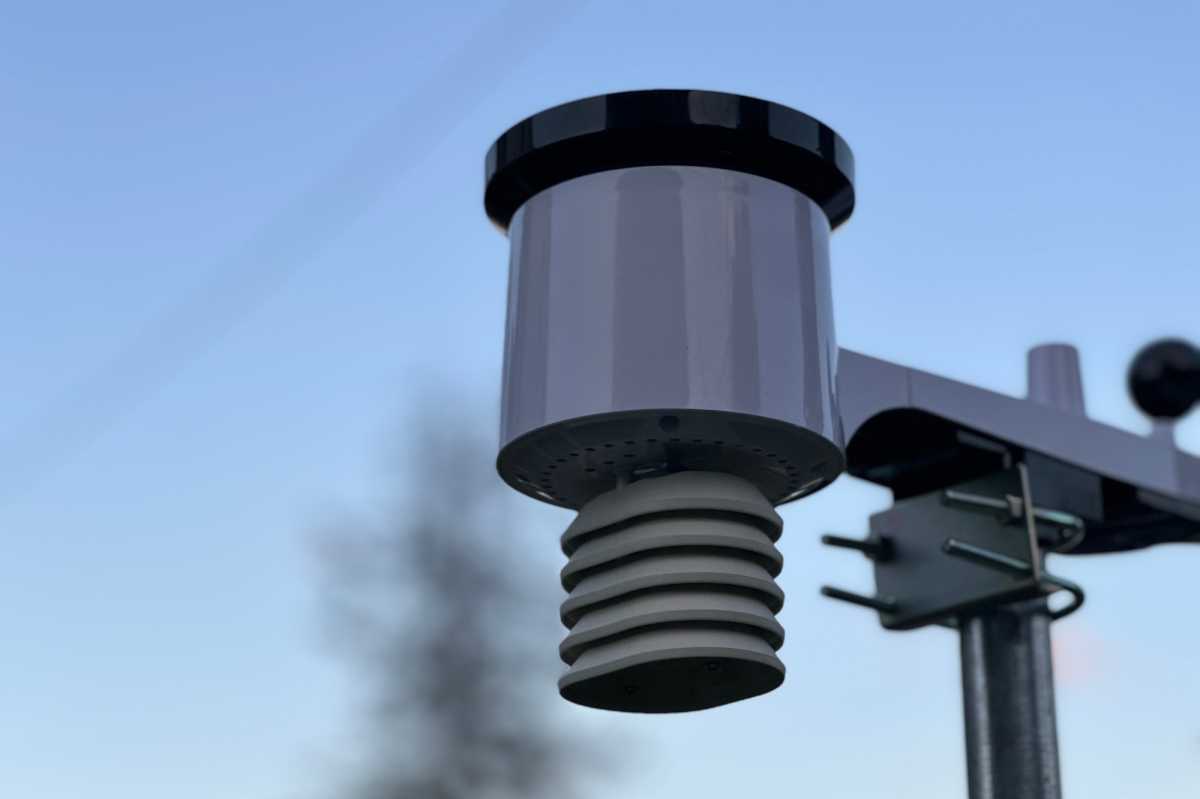
Here’s a view of the Ambient Weather WS-1965’s rain gauge and temperature and humidity sensors.
Ed Oswald/Foundry
This review is part of TechHive’s in-depth coverage of the best home weather stations.
The process of installing the WS-1965 was no different from that of other Ambient Weather stations. You’ll need to attach the wind vane and anemometer to the sensor suite, and then place a wire coil in the rain gauge to keep out debris. The coil is a thoughtful addition for a weather station in this price range, and it works almost as well as bird spikes (you can add a bird spikes, additional sensors, and other accessories as options when you buy the station or at any time after).
I did need to pause my installation because it sounded as though there was a loose screw inside the sensor suite. Taking apart what I could, I wasn’t able to isolate the source of the noise, and this is the first time I’ve encountered any manufacturing shortcoming with any Ambient Weather product.
In the end, I put the sensor suite back together with the hope that whatever it was wouldn’t impact the performance of the sensor suite. So, I put in the batteries and hoped for the best. In short order, the station had connected flawlessly to the Ambient Weather Network.
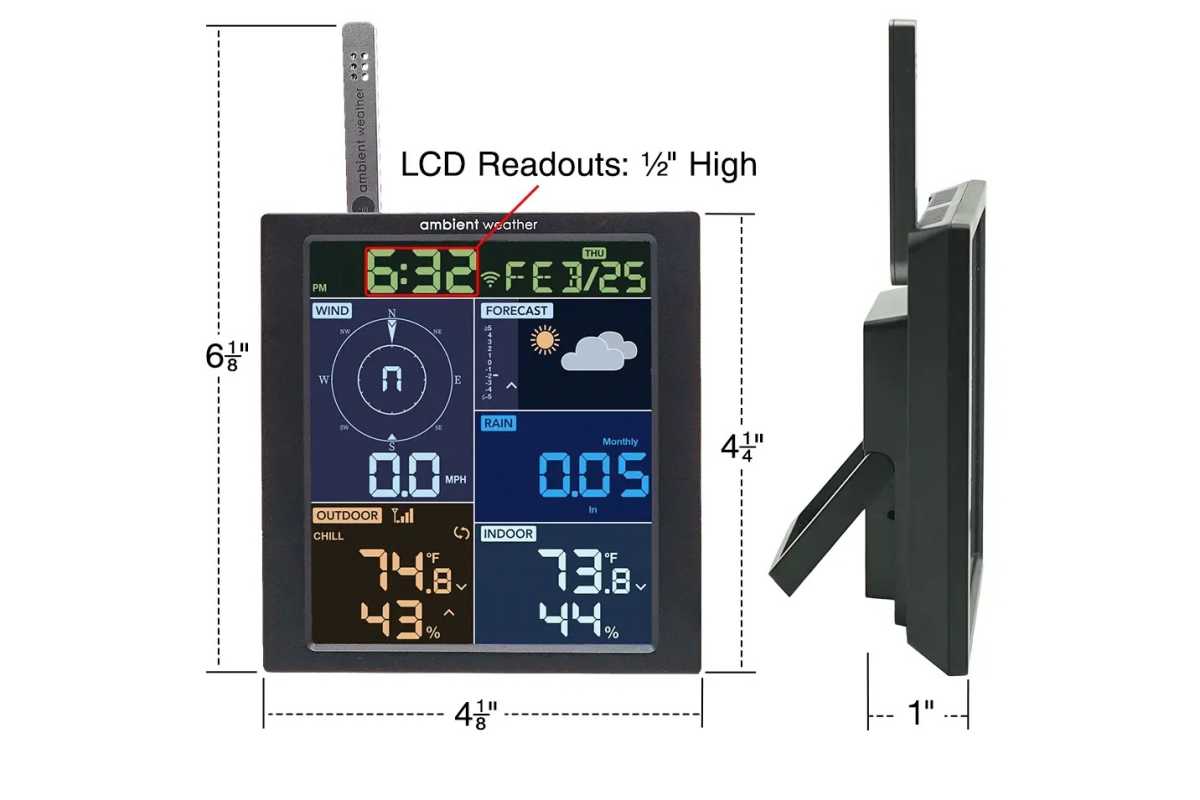
The Ambient Weather WS-1965 comes with this very small Wi-Fi console.
Ambient Weather
The only other reservation I’ll express here is that other Ambient Weather stations setups are completed through an app or the console. Here, you must connect to the console via Wi-Fi and alter settings there, which might be problematic for the less technically inclined. You should also be sure to upgrade the console’s firmware, as there’s a bug in the shipped firmware that affects the accuracy of the console forecast icon. A firmware upgrade wipes your Wi-Fi data, so this prevents you from having to do it more than once. You can also sign up for Ambient Weather firmware alerts at the preceding link.)
Reasonably accurate weather reporting
The feature set of the WS-1965 is nearly identical to every other Ambient Weather station on the market: indoor and outdoor temperature and humidity, wind speed, rainfall, and barometric pressure. While the console displays either barometric pressure or rain (you choose by setting a button on the back of the console), it does report pressure trends via a graph and forecast icon.
Two sets of data you won’t get this with this station is UV and light. Most buyers won’t miss it, but hardcore smart home enthusiasts might. One of the cool things you can do with a home weather station is use its light sensor to trigger your home’s lighting.
Overall, accuracy was what I expected. I compared readings to the KestrelMet 6000, which runs with fan aspiration (this keeps air moving through the sensor area, preventing heat buildup). Surprisingly, the WS-1965 reported cooler temperatures than the 6000 on numerous occasions. Looking through the data, the difference grew to as much as a degree during the afternoon. It’s more typical for a non-aspirated weather station like this one to report warmer readings in direct sunlight. Whether this is some kind of post-reading adjustment, I’m not sure. The WS-1965’s humidity readings were generally accurate; however, they were a bit too high in drier weather.
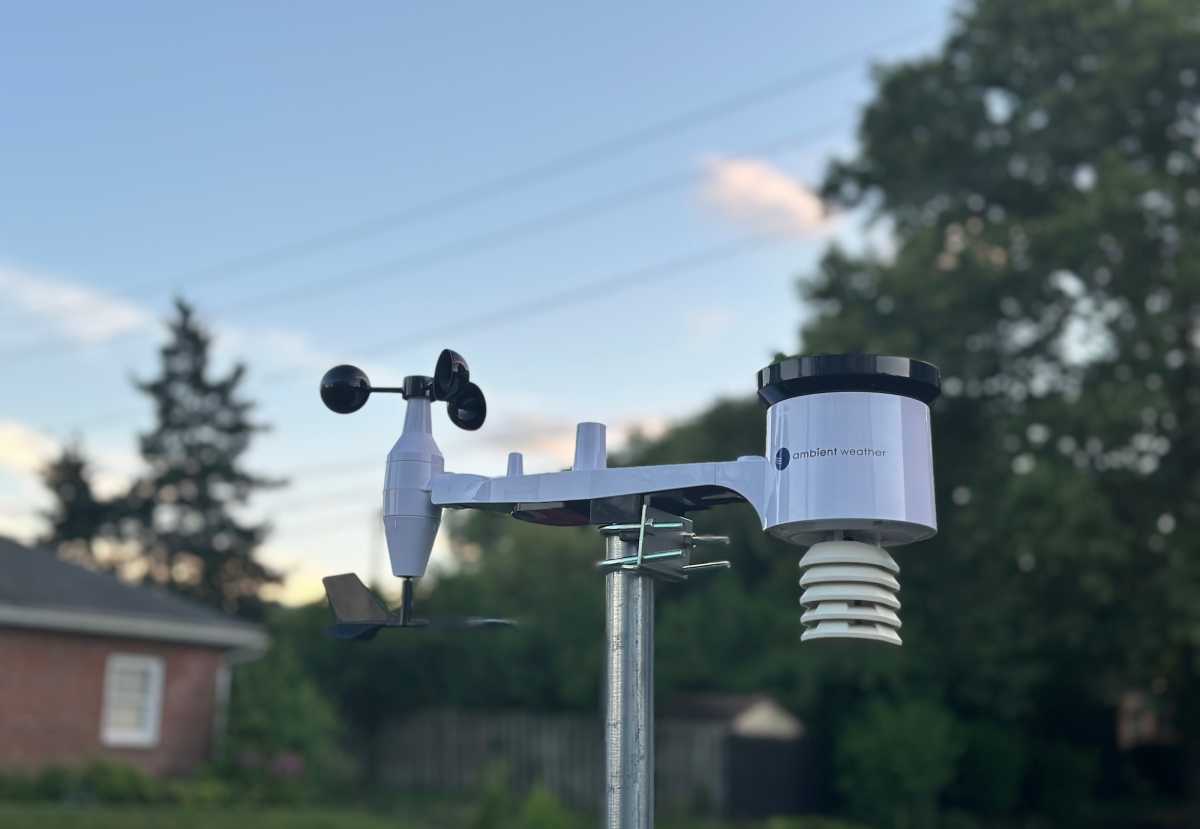
Ed Oswald/Foundry
The rain gauge worked well, measuring 1.01 inches of rain during the test period, compared to the KestrelMet 6000’s 1.00 inch. I erred in not calibrating the WS-1965’s barometer; however, it operated within about .05 to 0.1 inch of the KestrelMet, accounting for the miscalibration. I wouldn’t say that’s inaccurate, but it is a larger margin of error than I’d like to see.
Still, those errors are less than what I’ve experienced with similarly stations from AcuRite and La Crosse, and they won’t matter much to casual weather observers. But if you’re an enthusiast and can stretch your budget by another $50, you’ll be a lot happier with Ambient Weather’s WS-2902.
Ambient Weather Network gets a slight upgrade
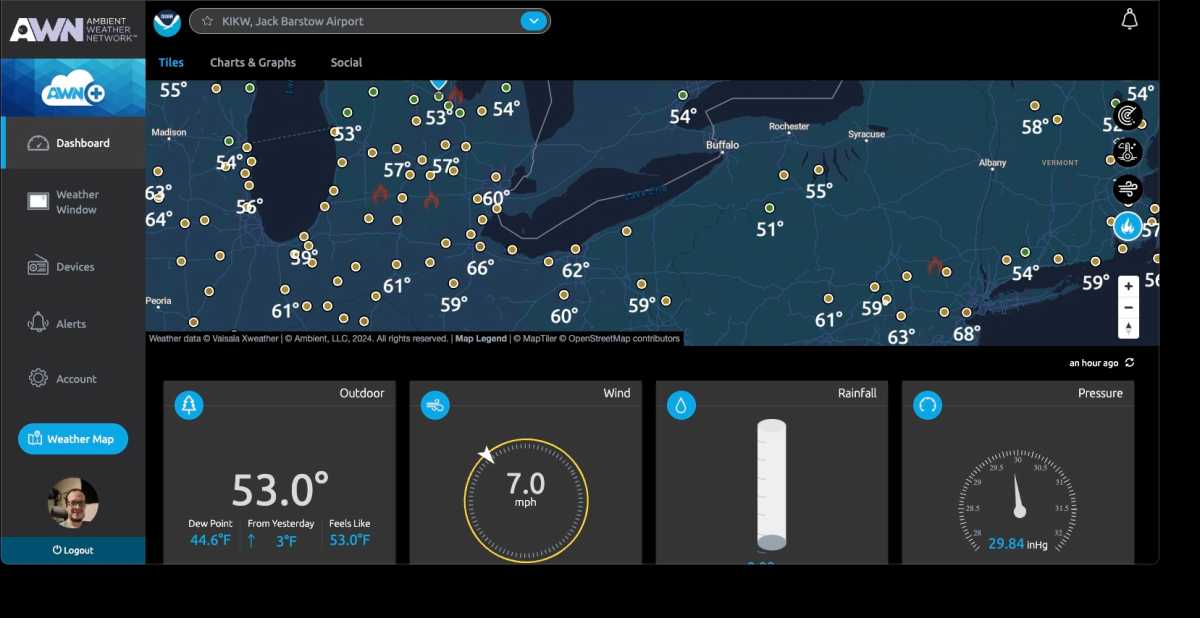
The subscription-based Ambient Weather Network Plus includes longer forecasts, more data storage, and extra map layers; wildfires shown here.
Ed Oswald/Foundry
While Ambient Weather Network (AWN) has not changed since I discussed in my KestrelMet 6000 review, it now has a new fee-based tier.
While the free level provides the map layers, notifications, forecast, and one-year data history, a new $50 annual ($5 per month) “plus” tier adds additional map layers, text alerts, three-year data history, and longer-term forecasts up to 10 days. Those additional data layers are courtesy of its partnership with Vaisala Weather.
We’ve shown one of the bonus layers below, a map of current nearby fires. One thing that surprised me is that while Ambient Weather has partnered with AccuWeather on weather data and to cobrand the company’s most popular models (the WS-2902, WS-2000, and WS-5000), there is no AccuWeather map data.
It’s also unclear whether AWN stores your weather data past a year if you aren’t subscribed. I know that Davis does, so if you drop a subscription and pick it back up, that data remains. Ambient Weather’s privacy policy and help documents don’t specify.
You can always opt to share your data with Weather Underground: mine has data going back eight years (across three stations) and has always been free.
The AWN Weather Window
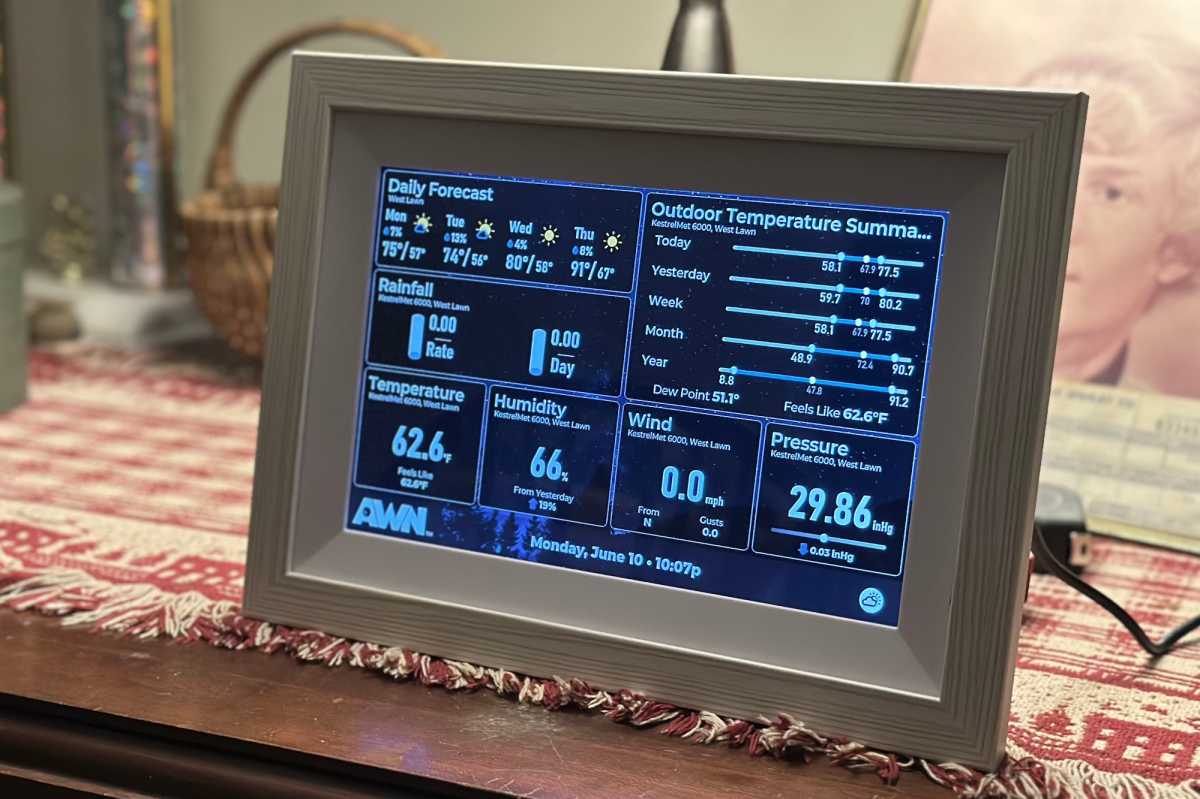
The AWN Weather Window can operate with or independent of a weather station.
Ed Oswald/Foundry
We also received Ambient Weather’s new Weather Window, a device I can best describe as a cross between a digital picture frame and a weather station console. While I didn’t use it with the WS-1965, I have been using it to display readings from the KestrelMet 6000.
I’m a big fan of the layout, which is customizable through the Ambient Weather dashboard; however, you can’t click through to more detailed information the way you can with the Davis WeatherLink Console, and the Weather Window connects via your Wi-Fi network, not directly to your sensor suite.
I prefer a console with direct-to-sensor connectivity. Wi-Fi has improved quite a bit, and the days of rebooting your router on the daily are long past, but that connectivity still isn’t perfect. The Weather Window’s $199 price tag means it costs as much of some of Ambient Weather’s entire weather stations; it also costs as much some consoles, but it isn’t one.
If someone could meld the design, connectivity, and detail of the Davis WeatherLink Console with AWN’s Weather Window’s superior user interface, we’d have the ideal device. That said, we can at least put the days of cheap LCD consoles behind us.
Should you buy the Ambient Weather WS-1965?
While I understand the market Ambient Weather is targeting, the WS-1965 is missing the things that have made Ambient Weather so popular: its accuracy and build quality.
Ambient Weather’s WS-2902 surprised me a half-decade ago with its capability to hold its own with the Davis Vantage Vue. A week of comparing readings with other home weather stations revealed that the WS-1965’s sensor quality isn’t as good, and neither is its build quality—I still haven’t figured out what’s rolling around inside it. The good news is that the user reviews I’ve seen to date don’t suggest a widespread manufacturing problem.
All that said, I’d still recommend the WS-1965 over any other station in its price range; just realize that you’ll get what you pay for.


